Want to feed the birds in your garden without having to refill the birdfeeder? Discover 15 Berry Bushes that not only beautify your landscape but also provide essential food and shelter for birds all year round!
Berry bushes are more than just a source of delicious fruit for humans. They also provide essential food and shelter for many bird species throughout the year. Adding berry-producing shrubs to your yard or garden creates a natural bird sanctuary that supports local wildlife and adds beauty to your landscape.
But How Do You Know Which Berries to Plant?
Different berry bushes attract different types of birds, from cardinals and robins to waxwings and thrushes. When you select a variety of bushes that produce berries in different seasons, you can enjoy bird watching year-round while providing a consistent food source for your feathered visitors.
Here are 15 different types of berry bushes and trees plus the birds they will attract to your garden.
1) Serviceberry (Amelanchier)
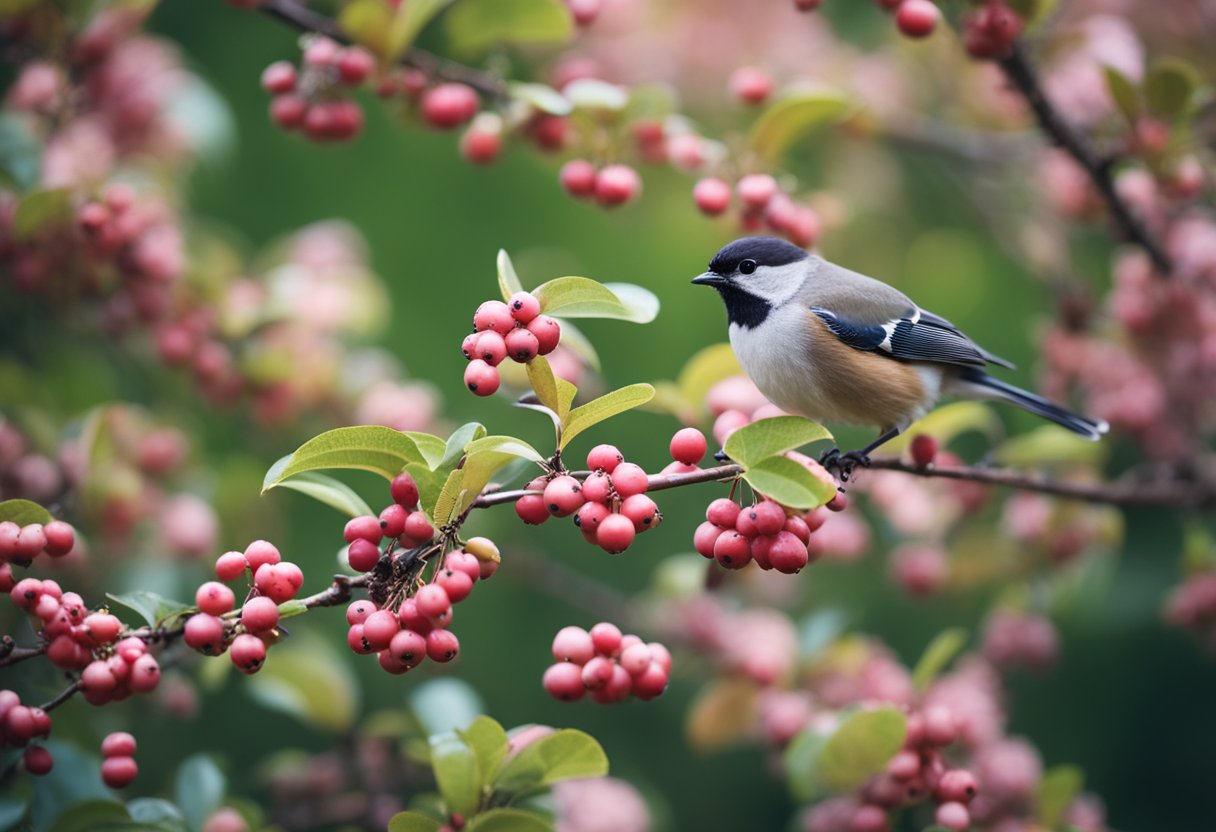
Serviceberry bushes are excellent additions to bird-friendly gardens. These native shrubs produce berries that birds find irresistible during early summer, often before other fruits become available.
Why Birds Love It: You can expect to attract many bird species with serviceberry, including robins, waxwings, and thrushes. The berries turn from red to dark purple when ripe, signaling to birds they’re ready to eat.
How to Grow: Serviceberry plants grow well in most soil types and can handle partial shade to full sun. They typically reach 6-20 feet tall, depending on the variety you choose.
Beyond feeding birds, these bushes add year-round beauty to your yard. White spring flowers, summer berries, and vibrant fall foliage make serviceberry a multi-season performer.
Where to Plant: Plant serviceberry where you can enjoy watching birds feast on the fruits. Consider placing near a window or patio for the best viewing opportunities.
2) Elderberry (Sambucus)
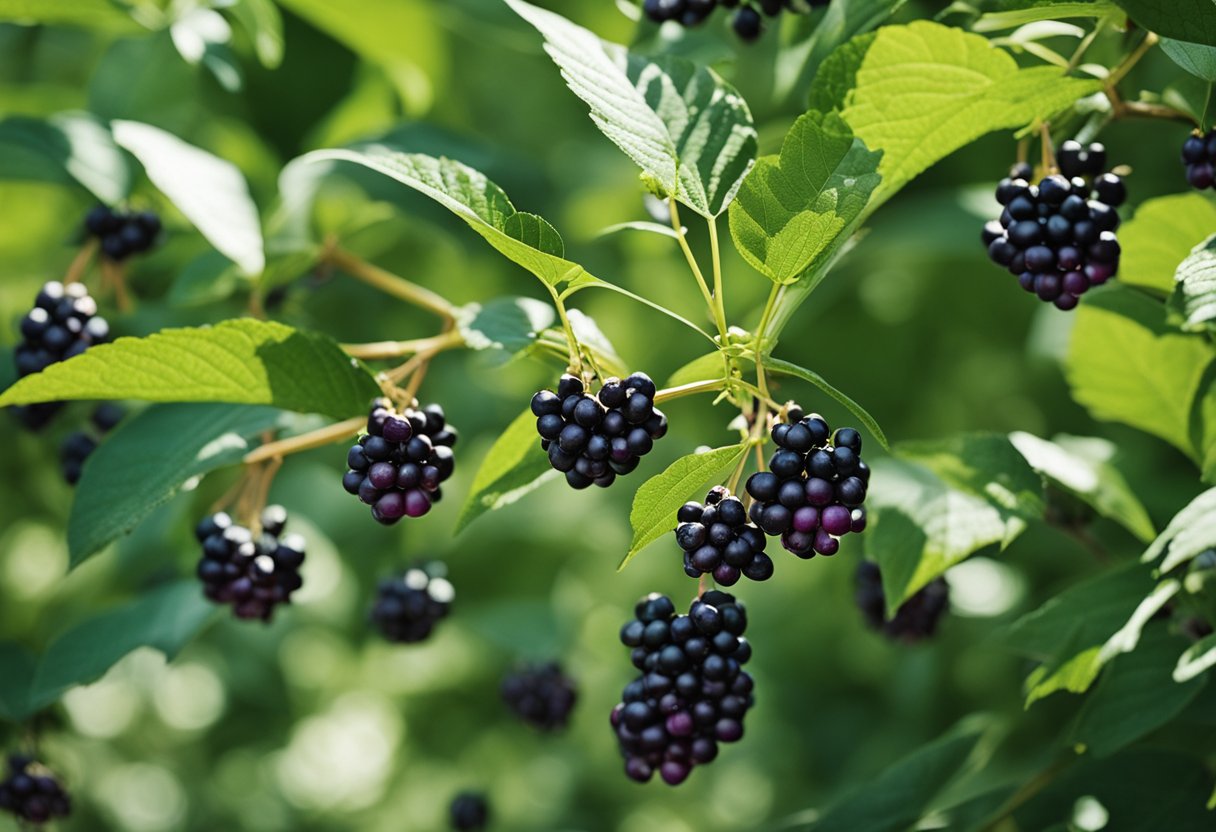
Why Birds Love It: Elderberry bushes attract a wide variety of birds to your garden. These native shrubs produce clusters of small dark berries that birds find irresistible. Cardinals, catbirds, thrushes, and bluebirds are particularly fond of elderberries.
How to Grow: Elderberry bushes grow quickly and can reach 5-12 feet tall. They prefer moist soil in either full sun or partial shade. You can plant them along the edges of your property to create natural bird habitats.
The berries appear in late summer to early fall after the bush produces showy white flower clusters in spring. These flowers also attract beneficial insects that birds feed on.
When planting elderberry, choose American elderberry (Sambucus canadensis) or black elderberry (Sambucus nigra) for the best results. Allow enough space for these bushes to spread, as they can grow quite wide.
Birds will feast on elderberries while also helping to disperse the seeds throughout your landscape. You’ll enjoy watching the bird activity these bushes create throughout the seasons.
3) American Beautyberry (Callicarpa Americana)
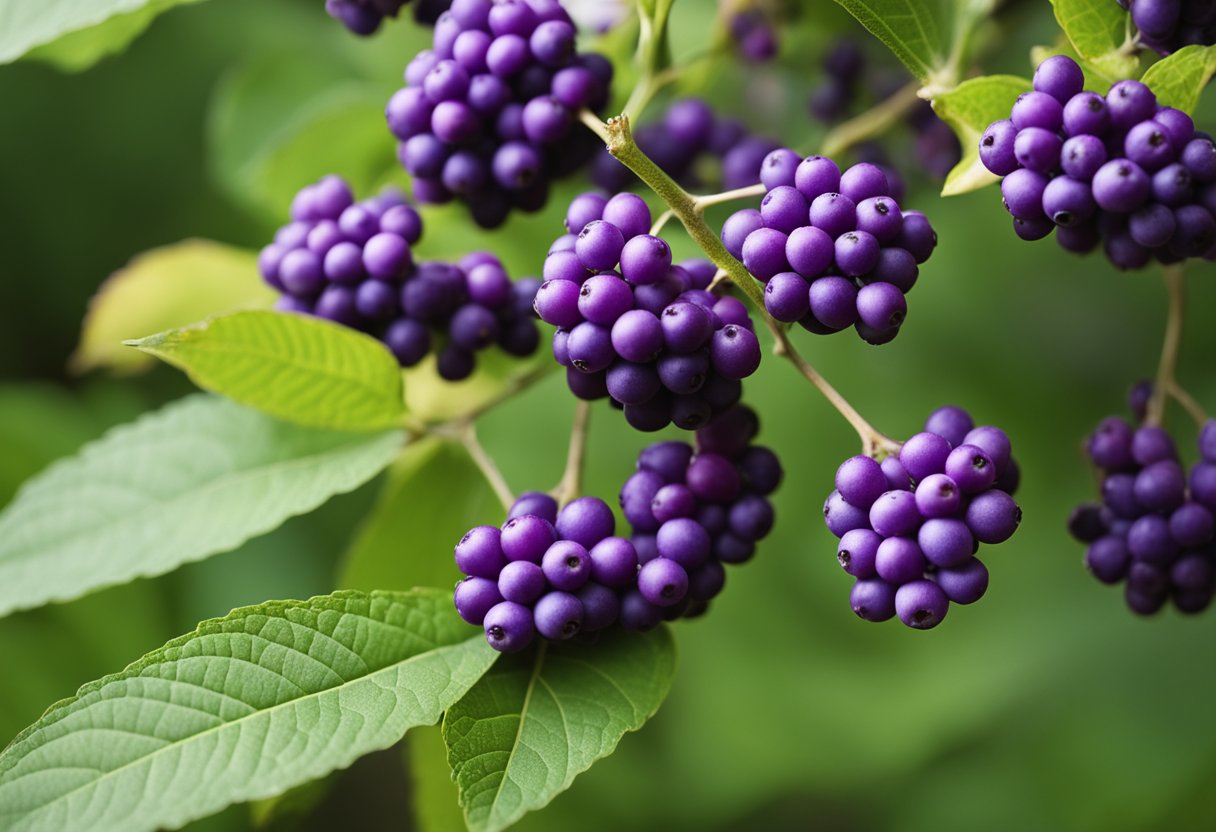
American Beautyberry is a native shrub that produces bright purple berries in tight clusters around its stems. The vibrant berries appear in late summer and persist into winter, making them a reliable food source for birds.
How to Grow: This deciduous bush grows 3-5 feet tall and wide, with an arching, somewhat informal growth habit. It adapts well to various conditions but prefers partial shade and moist, well-drained soil.
You can grow American Beautyberry in USDA zones 6-10. It requires minimal maintenance and has good drought tolerance once established. The plant also offers attractive light green foliage during growing seasons.
Why Birds Love It: Birds particularly love these berries after the first frost, when the fruits become softer and sweeter. Cardinals, mockingbirds, robins, and thrashers are frequent visitors to these bushes.
Planting Tips: Consider planting this shrub in woodland gardens or natural areas where birds can feed undisturbed. Its unique purple berries add visual interest to your landscape while supporting local bird populations.
3) Winterberry (Ilex verticillata)

Winterberry is a native deciduous holly that produces bright red berries that persist through winter. These berries provide an important food source for birds when other options are scarce.
Unlike many holly varieties, winterberry loses its leaves in fall, making the berries even more visible to hungry birds. The plant can grow 3-15 feet tall depending on the variety and conditions.
What Birds Love It: Birds especially attracted to winterberry include robins, bluebirds, and cedar waxwings. These birds help spread the seeds to new areas after consuming the berries.
How to Grow: You’ll need both male and female plants to produce berries, as winterberry is dioecious. One male plant can pollinate up to ten female plants, so plan accordingly when purchasing.
Winterberry thrives in moist soils and can handle part shade, though it produces more berries in full sun. It’s also adaptable to clay soils and wet areas where other shrubs might struggle.
Consider planting winterberry in groups for visual impact and to create a more substantial food source for birds in your landscape.
5) Mulberry (Morus)
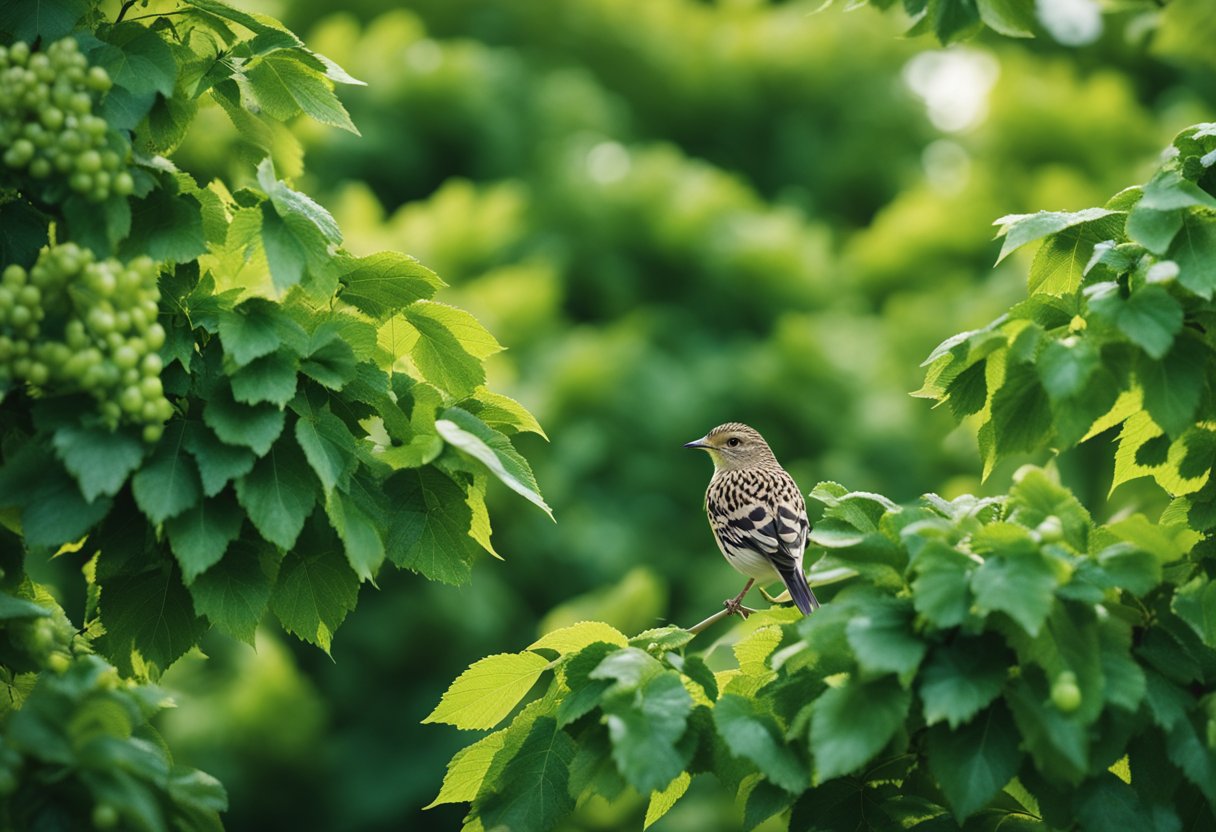
Mulberry trees are excellent for attracting birds to your garden. These trees produce juicy berries that birds find irresistible during summer months.
What Birds Love It: Many bird species including robins, catbirds, and tanagers will visit your mulberry bushes. The trees also support various insect species that provide additional food for birds.
How to Grow: Birds especially attracted to winterberry include robins, bluebirds, and cedar waxwings. These birds help spread the seeds to new areas after consuming the berries. You can grow mulberry as either a bush or tree depending on your space and preferences. The fruits come in white, red, or black varieties, with birds typically favoring the darker berries for their sweet flavor.
Mulberry plants are fairly easy to maintain and adapt to different soil conditions. They grow quickly and can provide shade in addition to food for your feathered visitors.
When planting mulberry, consider that they can reach 30-50 feet tall as trees, though pruning can keep them smaller. The fruit can stain surfaces, so avoid planting near patios or driveways.
6) Chokeberry (Aronia)
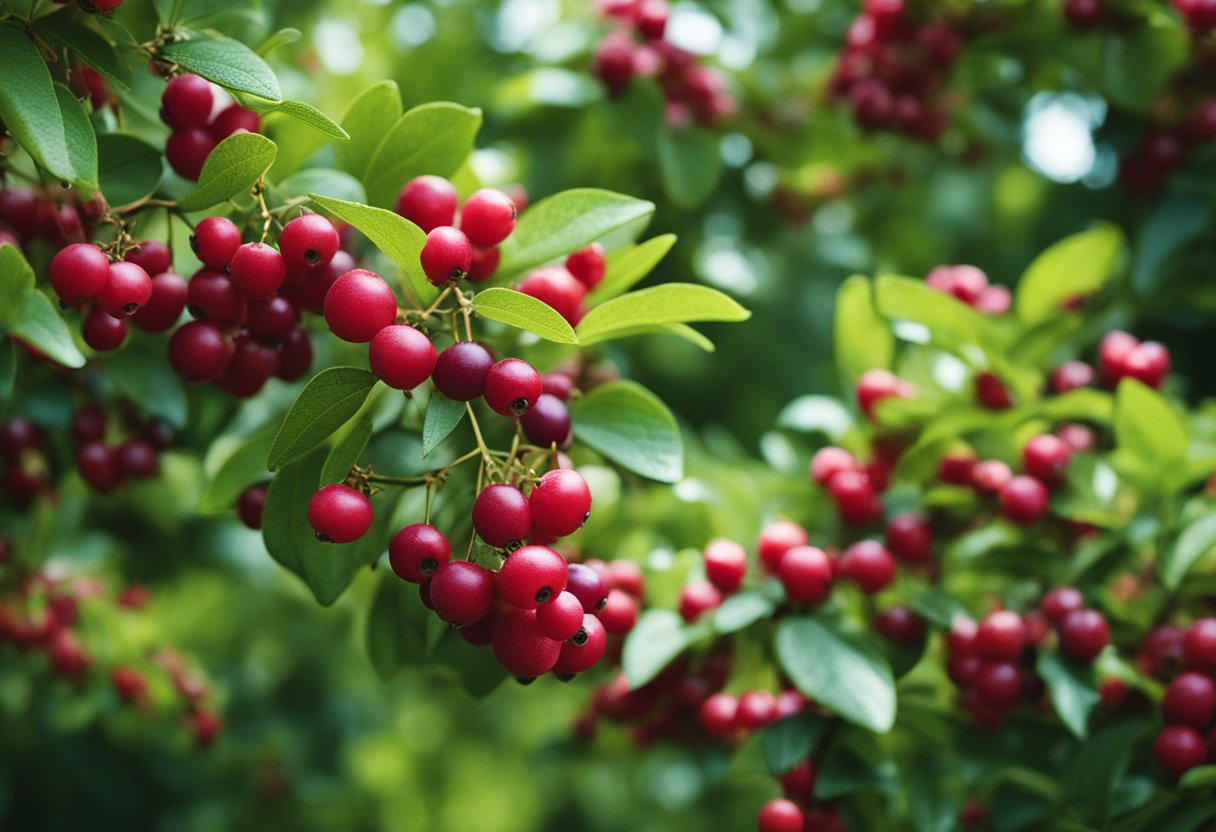
Chokeberry bushes are excellent additions to your bird-friendly garden. They produce clusters of small berries that birds love, especially in late summer and fall when other food sources may be scarce.
Why Birds Love It: These hardy shrubs come in two main varieties: black chokeberry (Aronia melanocarpa) and red chokeberry (Aronia arbutifolia). Both types offer nutritious berries that attract many bird species including robins, cedar waxwings, and thrushes.
How to Grow: Chokeberries are native to eastern North America and thrive in USDA zones 3-8. You can plant them in full sun to partial shade, and they adapt well to different soil conditions.
The shrubs grow 3-8 feet tall depending on the variety. They offer more than just food for birds—their white spring flowers and brilliant red fall foliage add visual interest to your landscape year-round.
You’ll find chokeberries easy to maintain once established. They require minimal pruning and are resistant to most pests and diseases. Consider planting several bushes together to create a natural hedgerow that provides both food and shelter for your backyard birds.
7) Holly (Ilex)
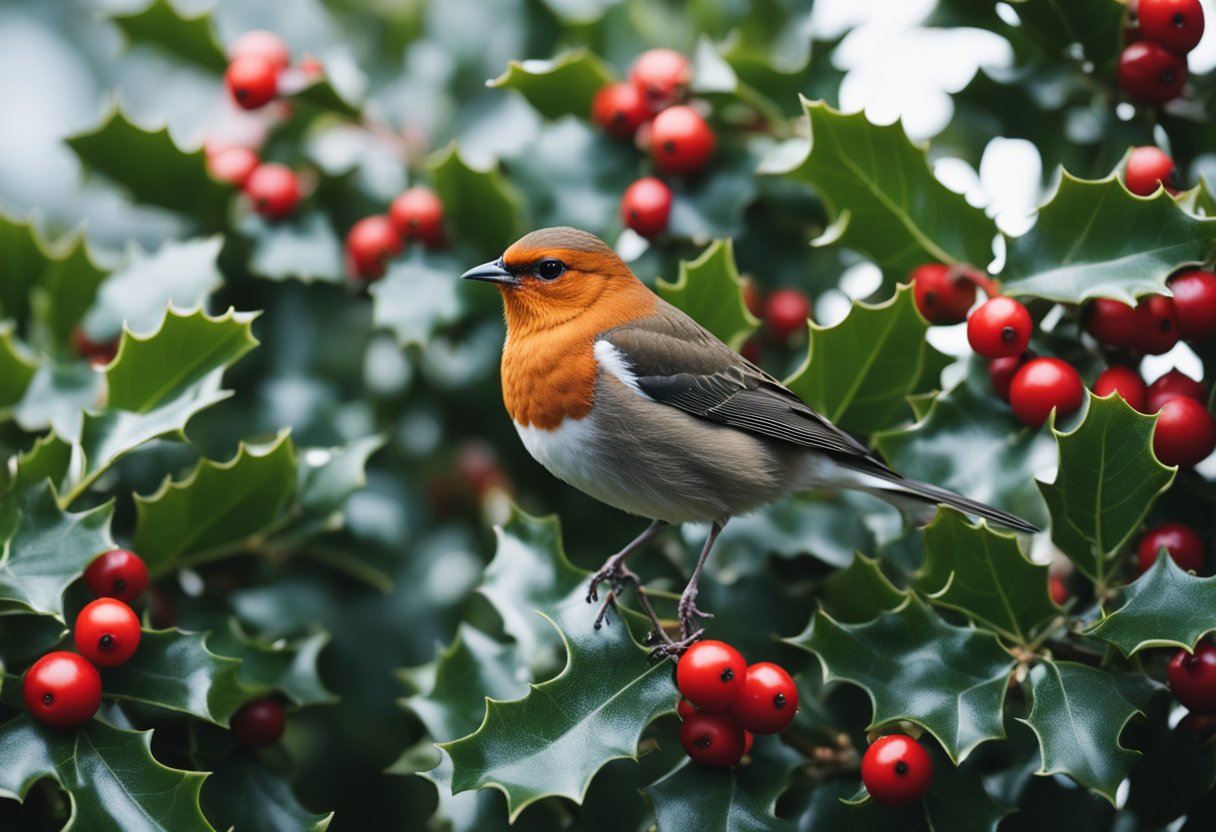
Holly bushes are excellent for attracting birds to your garden. Their dense foliage provides safe shelter for birds, especially during harsh winter months.
These evergreen shrubs produce bright red berries that remain on the plant throughout winter. These berries become an important food source when other foods are scarce.
What Birds Love It: Many bird species love holly berries, including robins, thrushes, and waxwings. The berries are slightly toxic to humans but perfectly safe for birds to eat.
You can find many holly varieties to suit your space. American holly (Ilex opaca) can grow quite large, while smaller varieties like Inkberry (Ilex glabra) work well in tighter spaces.
How to Grow: For berry production, you’ll need both male and female holly plants. Only female plants produce berries, but they need a male plant nearby for pollination.
Plant holly bushes in partial to full sun for best berry production. They adapt to various soil types but prefer well-draining soil that’s slightly acidic.
8) Dogwood (Cornus)
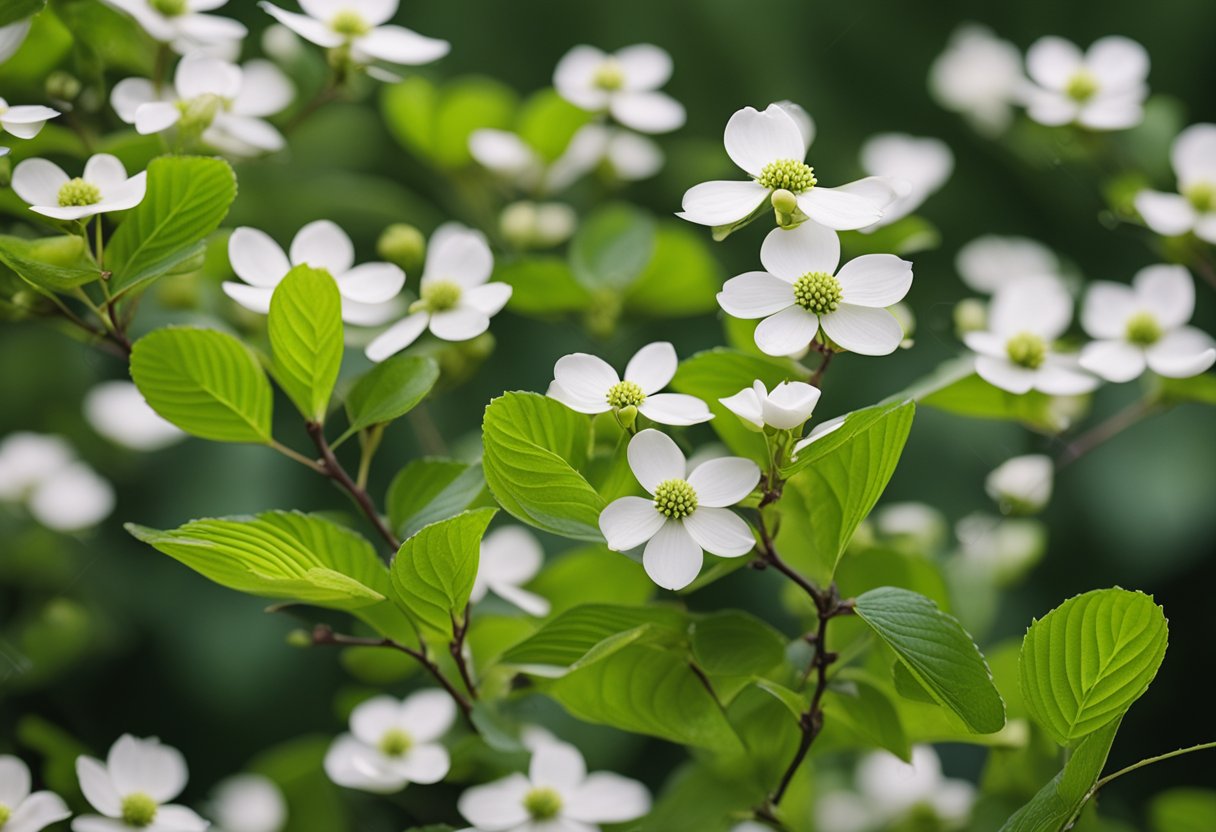
Dogwood shrubs and trees are excellent additions to bird-friendly gardens. Their bright red or white berries appear in late summer and fall, providing food when many birds need it most.
Several dogwood species work well for attracting birds, including red osier dogwood and flowering dogwood. These plants produce clusters of berries that cardinals, bluebirds, and thrushes eagerly consume.
How to Grow: You’ll find dogwoods adaptable to many growing conditions. They prefer partial shade and moist soil but can tolerate full sun if given enough water.
Dogwoods reach heights of 15-25 feet depending on the variety. Their distinctive horizontal branching pattern creates perfect perching spots for birds.
Beyond berries, dogwoods offer beautiful spring flowers that attract insects. These insects become additional food sources for birds visiting your garden.
Plant dogwoods near the edge of your property to create a natural transition zone. Birds appreciate having protective cover nearby when feeding on the berries.
9) Red Osier Dogwood (Cornus sericea)
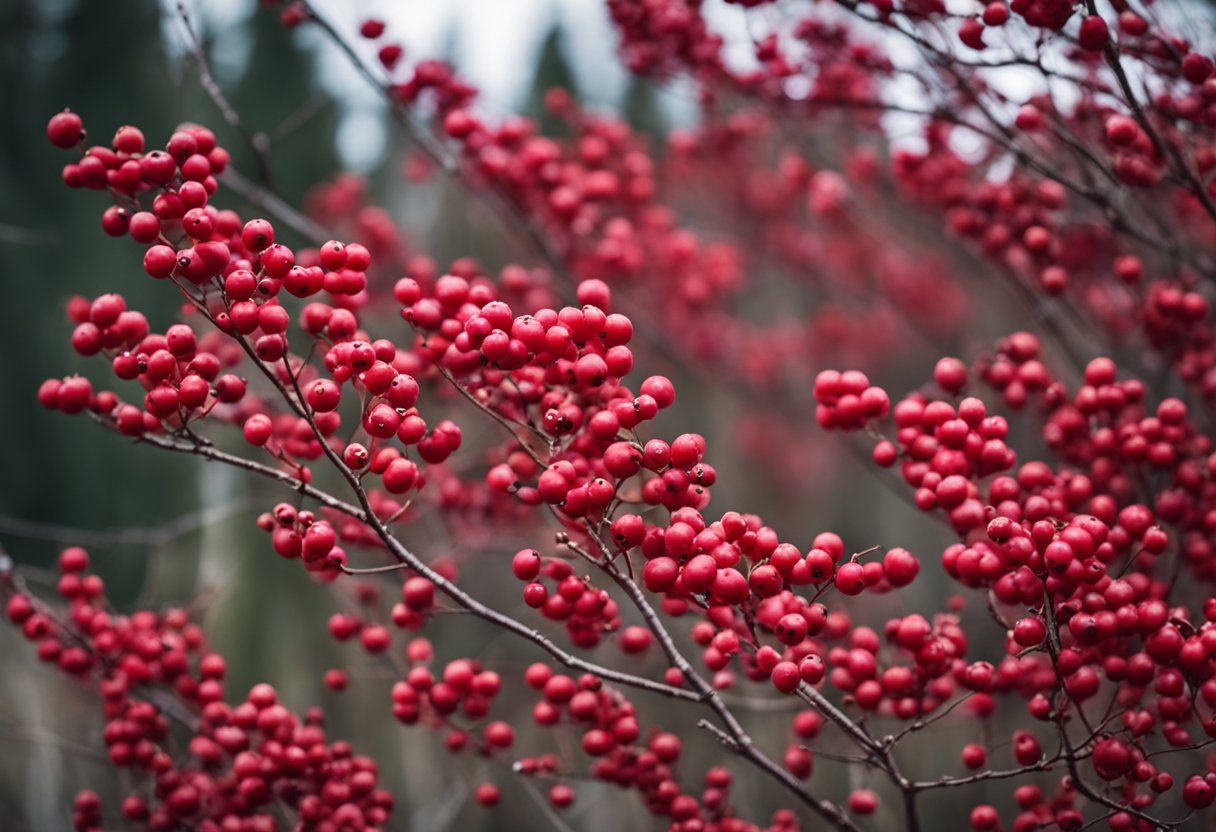
Red Osier Dogwood is a stunning shrub that offers both beauty and function in your yard. Its bright red stems create winter interest while its white berries feed birds during crucial months.
Why Birds Love It: Birds especially appreciate Red Osier Dogwood’s white berries in late summer and fall. Over 40 species of birds including robins, cardinals, and waxwings will visit to feast on these nutritious fruits.
How to Grow: This native shrub grows 6-9 feet tall and thrives in wet areas. You can plant it along streams, pond edges, or in low spots where water collects in your yard.
Red Osier Dogwood is extremely hardy, surviving in USDA zones 2-8. You’ll find it easy to grow in full sun to partial shade. The shrub spreads through underground stems, creating thickets that provide nesting spots for birds.
Beyond feeding birds, this dogwood attracts butterflies in spring with its white flower clusters. You can prune older stems in early spring to maintain the vibrant red color that makes this shrub so distinctive.
10) Sumac (Rhus)

Sumac shrubs offer birds both food and shelter in your garden. These hardy plants produce bright red berry clusters that remain on branches throughout winter when other food sources are scarce.
Several types of sumac grow well in North America, including staghorn sumac (Rhus typhina) and smooth sumac (Rhus glabra). These native plants can reach 10-15 feet tall and spread through root suckers to form thickets.
What Birds Love It: Birds particularly attracted to sumac berries include robins, bluebirds, cardinals, and many songbirds. The berries have a tart flavor that becomes more palatable to birds after freeze-thaw cycles.
How to Grow: Sumac thrives in full sun to partial shade and adapts to poor soil conditions. You can plant sumac in dry areas where other plants struggle. The shrubs require minimal maintenance once established.
Beyond providing food, sumac offers excellent nesting sites and protection from predators. The distinctive fall foliage turns brilliant red-orange, adding visual interest to your landscape year-round.
11) Arrowwood Viburnum (Viburnum dentatum)
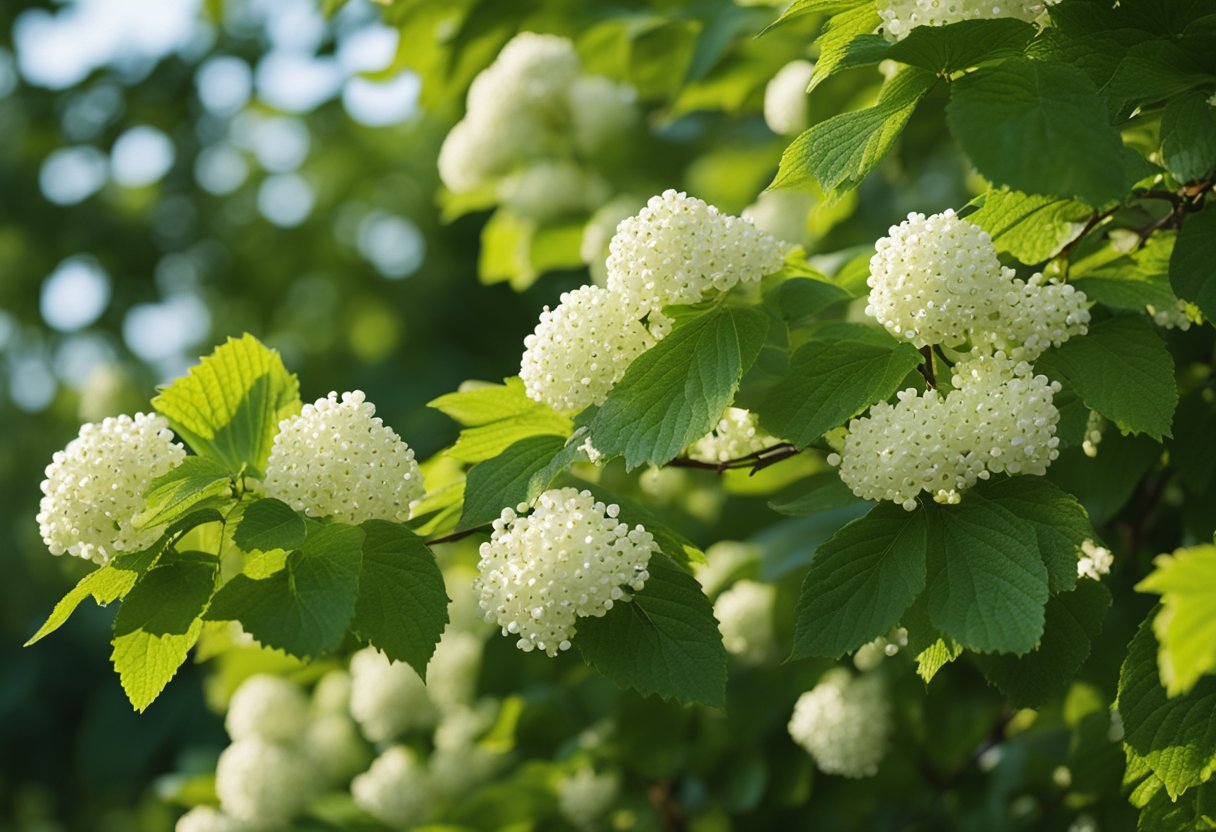
Arrowwood Viburnum offers birds a valuable food source with its clusters of blue-black berries that appear in late summer and fall. This native shrub grows 6-10 feet tall and wide, making it perfect for hedges or privacy screens in your yard.
Why Birds Love It: Birds particularly enjoy these berries after the first frost, when the fruits become softer and sweeter. Cardinals, thrushes, and cedar waxwings are among the many species that will visit your garden to feast on these nutritious berries.
How to Grow: This viburnum is remarkably adaptable and can thrive in both sun and partial shade. You’ll find it grows well in most soil types, though it prefers moist conditions.
White flower clusters appear in spring, creating a showy display before transforming into the dark berries birds love. The plant’s dense growth pattern also provides excellent nesting sites and shelter for birds.
For best berry production, plant in groups of three or more to ensure proper cross-pollination. Arrowwood Viburnum requires minimal maintenance once established, making it an easy addition to your bird-friendly landscape.
12) Blackhaw Viburnum (Viburnum prunifolium)
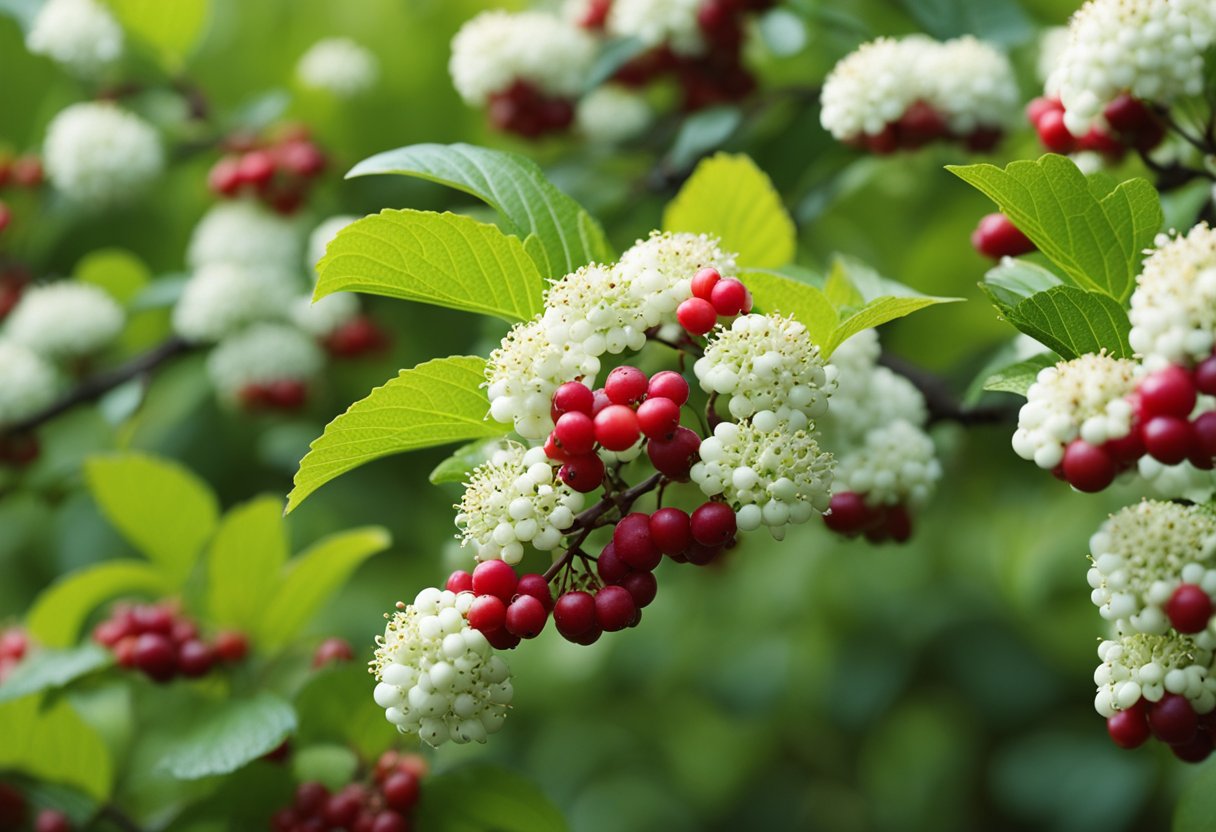
Blackhaw Viburnum produces clusters of dark blue-black fruits that birds find irresistible. This native shrub grows 12-15 feet tall and works well as a hedge or standalone specimen in your yard.
Why Birds Love It: Birds particularly enjoy the berries that ripen in fall and often persist into winter. Cardinals, robins, and thrushes are frequent visitors when these fruits are available.
How to Grow: This versatile shrub adapts to various conditions, including partial shade to full sun. You’ll find it grows well in most soil types as long as drainage is adequate.
Blackhaw Viburnum offers more than just bird food. Its white flower clusters in spring provide nectar for pollinators, while its reddish-purple fall foliage adds visual interest to your landscape.
Plant this low-maintenance shrub where you can watch birds feast on its fruits. The berries are technically edible for humans too, though birds will likely get to them first.
13) Spicebush (Lindera benzoin)
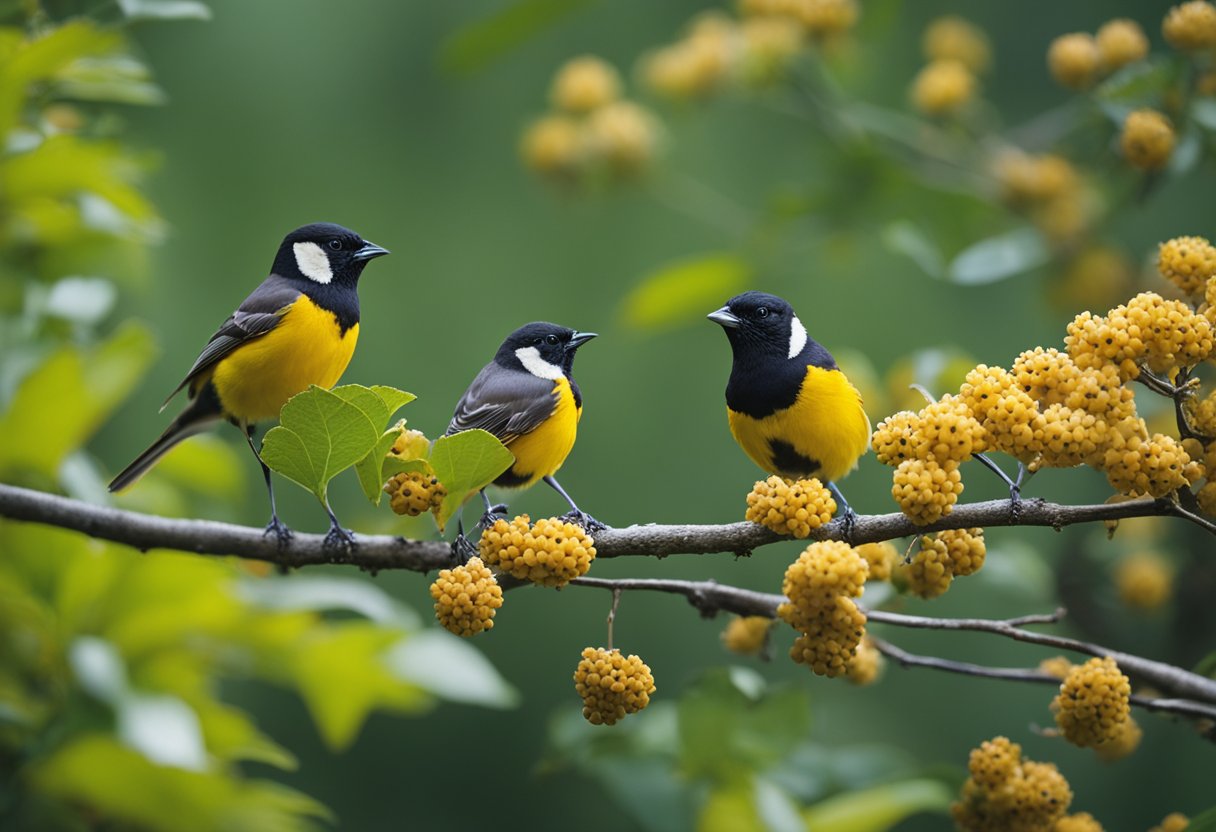
Spicebush is a native shrub that grows 6-12 feet tall with aromatic leaves and small yellow flowers in early spring. It thrives in moist woodland edges and understory settings across eastern North America.
Birds are particularly drawn to spicebush for its bright red berries that appear in late summer and fall. These fruits are especially valuable for migrating songbirds that need high-energy food before their long journeys.
Why Birds Love It: Over 20 species of birds feast on spicebush berries, including thrushes, catbirds, and robins. The shrub also serves as the host plant for spicebush swallowtail butterflies, adding ecological value to your garden.
How to Grow: You’ll find spicebush easy to grow in partial shade with consistent moisture. It’s deer-resistant and adapts well to various soil types, though it prefers slightly acidic conditions.
For best berry production, plant both male and female shrubs. The berries only develop on female plants after pollination occurs.
14) American Cranberrybush (Viburnum trilobum)
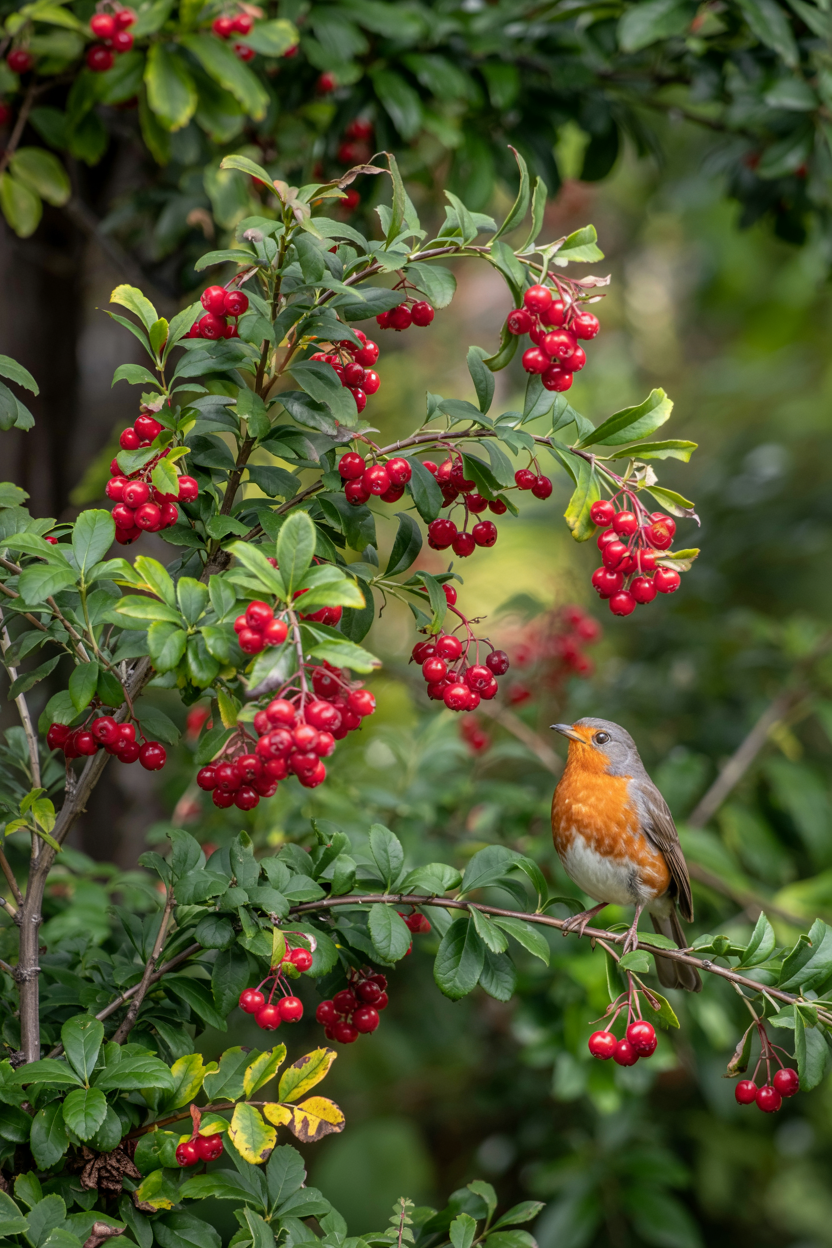
American Cranberrybush is a native shrub that grows 8-12 feet tall and wide. Its white flower clusters bloom in spring, creating a beautiful display that attracts pollinators to your garden.
The bright red berries appear in late summer and often remain on the bush throughout winter. These berries have high fat content, making them an excellent food source for birds during the coldest months.
What Birds Love It: Cardinals, robins, bluebirds, and thrushes are particularly fond of these berries. You’ll notice that birds often leave these fruits until late winter when other food sources become scarce.
How to Grow: This viburnum is hardy in zones 2-7 and adapts to various soil conditions. You can plant it in full sun to partial shade, though it produces more berries with more sunlight.
The bush requires minimal maintenance once established. Its three-lobed leaves turn a striking reddish-purple in fall, adding seasonal interest to your landscape even after the berries have been eaten.
Consider planting American Cranberrybush in mixed borders or as part of a wildlife garden. The combination of spring flowers, fall color, and winter berries makes it valuable for both you and your backyard birds.
15) Wild Raisin (Viburnum nudum)

Wild Raisin is a versatile native shrub that provides excellent food for birds during fall migration. It grows 5-12 feet tall and produces clusters of blue-black berries that resemble tiny grapes.
What Birds Love It: Birds particularly value these berries because they ripen in late summer to early fall when many birds need extra nutrition for migration. Robins, thrushes, bluebirds, and cedar waxwings eagerly seek out these nutrient-rich fruits.
How to Grow: You’ll find this shrub does well in moist areas along woodland edges or stream banks. It adapts to both sun and partial shade, making it suitable for various garden locations.
The creamy white flower clusters in spring add visual interest to your garden before transforming into berries. In autumn, the foliage turns a striking burgundy-red, adding seasonal beauty.
For best berry production, plant Wild Raisin in groups of three or more. You can expect birds to visit regularly once the berries ripen, especially during migration periods when energy-rich food is vital.
Benefits of Berry Bushes for Birds
Berry bushes provide essential food and shelter that help wild birds thrive throughout the year. These plants create natural sanctuaries where birds can feed, nest, and find protection from predators and harsh weather.
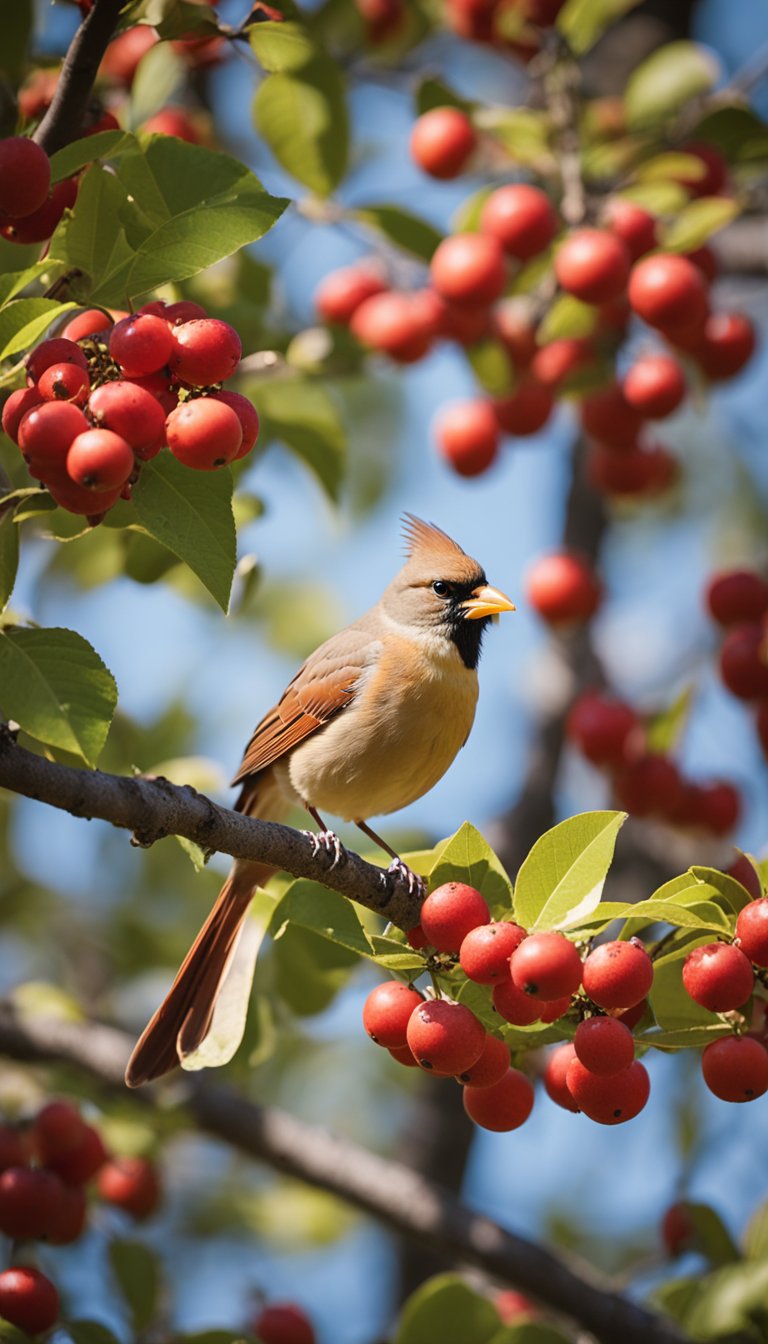
Nutritional Value
Berry bushes offer critical nutrition that birds need to survive and flourish. Many berries are rich in antioxidants, vitamins, and natural sugars that provide quick energy, especially important during migration and winter months.
Different birds prefer different types of berries. Robins and cedar waxwings favor juicy berries like serviceberries and elderberries. Cardinals and grosbeaks tend to seek out dogwood and viburnum fruits.
The timing of berry production is also important. Some bushes like elderberry and blackberry produce fruit in summer, while others like holly and beautyberry offer winter food when other sources are scarce.
Native berry bushes are particularly valuable because they’ve evolved alongside local bird species. These plants produce fruits with the right size, nutritional content, and ripening time to match birds’ needs in your specific region.
Shelter and Habitat
Berry bushes create dense, protective environments where birds can hide from predators and harsh weather. The branching structure offers ideal nesting sites for many species like cardinals, catbirds, and thrushes.
Thorny varieties such as blackberry and raspberry provide extra protection, making it difficult for larger predators to access nests. Many berry bushes also attract insects, which serve as an important protein source for nestlings.
You’ll notice more bird activity around multi-layered plantings. Creating clusters of berry bushes of different heights creates a complete habitat where birds can feed, nest, and take shelter all in one location.
Berry bushes also provide shelter during migration, giving traveling birds a safe place to rest and refuel. Even in winter, evergreen berry producers like holly and juniper offer crucial protection from snow, ice, and cold winds.
Berry Bush Planting Tips
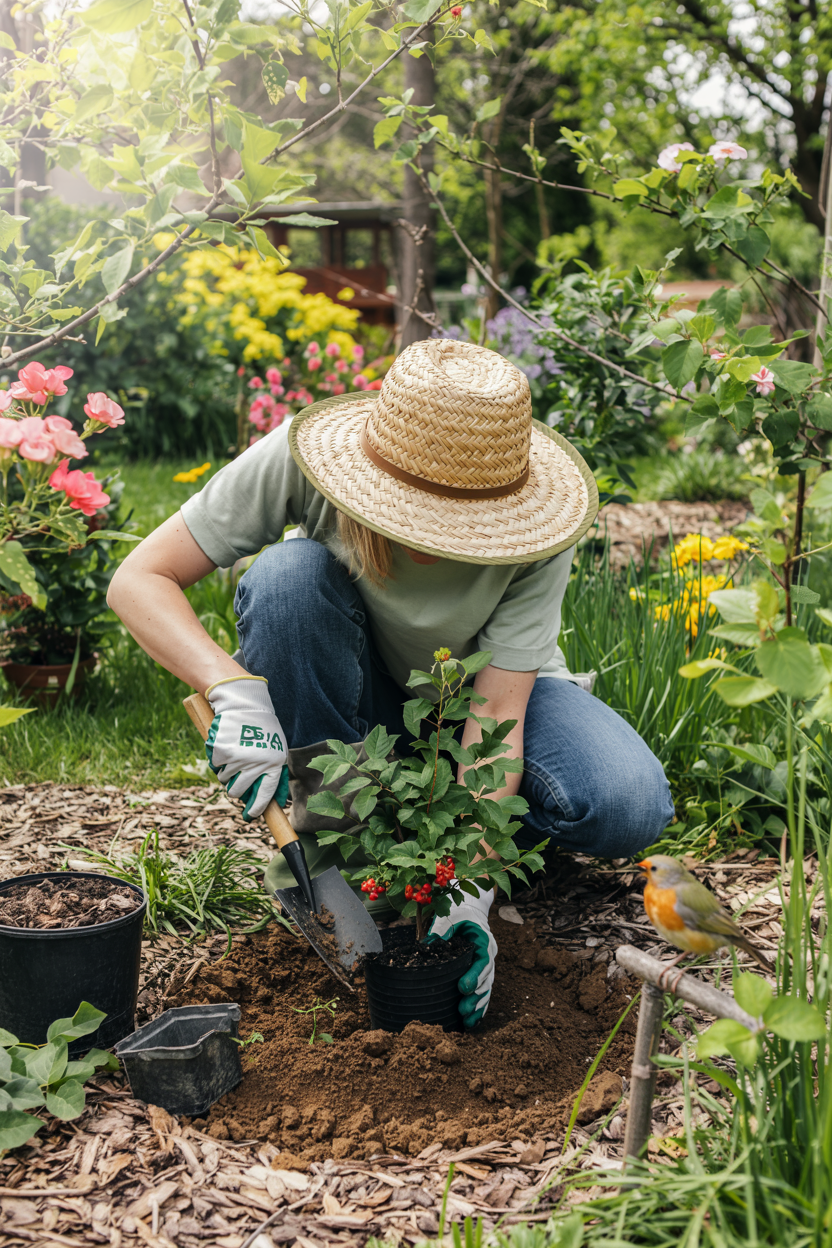
Planting berry bushes correctly ensures they thrive and produce abundant fruit for birds. Proper site selection, soil preparation, and regular maintenance will help your bushes establish quickly and remain healthy for years.
Selecting the Right Environment
Most berry bushes need full sun to produce abundant fruit. Choose a location that receives at least 6-8 hours of direct sunlight daily. Bird-friendly berry bushes like elderberry, serviceberry, and blueberry prefer well-draining soil with plenty of organic matter.
Before planting, test your soil pH. Blueberries require acidic soil (pH 4.5-5.5), while most other berry bushes prefer slightly acidic to neutral soil (pH 6.0-7.0). Add sulfur to lower pH or lime to raise it as needed.
Space your bushes properly. Larger varieties like elderberry need 6-10 feet between plants, while smaller bushes like currants can be placed 3-5 feet apart.
Planting depth matters! Set your bushes at the same depth they were in their nursery containers. Planting too deep can cause stem rot.
Maintenance and Care
Water newly planted berry bushes deeply once a week during their first growing season. Established plants need about 1-2 inches of water weekly during dry periods.
Apply 2-3 inches of organic mulch around your bushes to:
- Retain soil moisture
- Suppress weeds
- Regulate soil temperature
- Add nutrients as it breaks down
Prune your berry bushes regularly to enhance fruit production and maintain plant health. Each species has different pruning requirements – for example, remove elderberry’s oldest stems annually while blueberries need only light shaping.
Fertilize in early spring with a balanced organic fertilizer. Avoid high-nitrogen fertilizers which promote leafy growth at the expense of fruit production.
Bird-friendly tip: Avoid using pesticides on or near your berry bushes to keep birds safe and healthy.
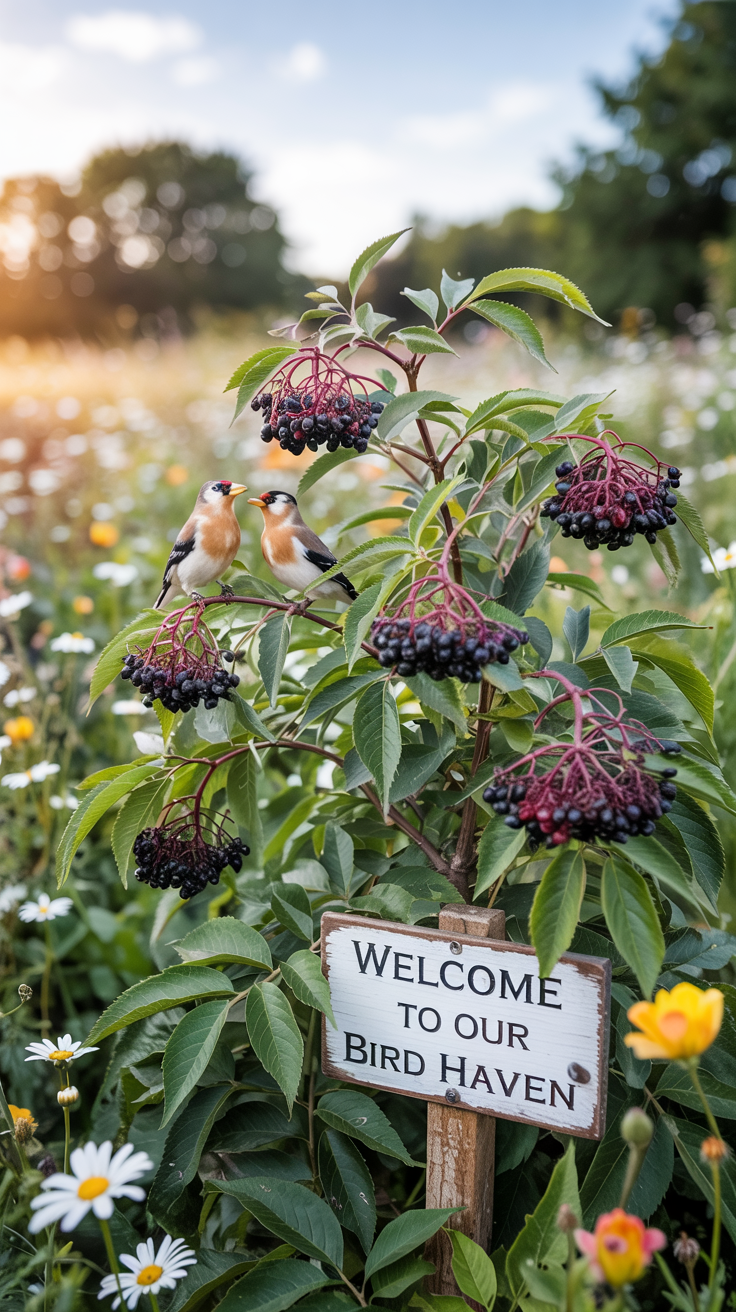


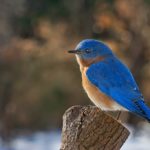
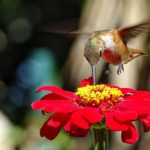

1 thought on “15 Berry Bushes for Birds: Essential Plantings to Attract Feathered Friends to Your Garden”